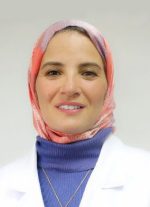1/ Presentation title
Electro-Acupuncture as a Fertility-Enhancing Therapy in Women with Atypical Polycystic Ovary Syndrome: AProspective Interventional Case Series Study
Scheduled
Day 1, 17:15
Presentation summary
Co-Authors :
Mai S. Elsheikh, Complemantery Department, Medicine Researches and Clinical Studies Institute, National Research Centre, Cairo, Egypt,
Hemat Allam, Complemantery Department, Medicine Researches and Clinical Studies Institute, National Research Centre, Cairo, Egypt,
Nagwa Hassan, Complemantery Department, Medicine Researches and Clinical Studies Institute, National Research Centre, Cairo, Egypt,
Taghreed Abdel Monem Shalabi, Prenatal Diagnosis and Fetal medicine Department, Human Genetics and Genomic Research Institute,National Research Centre, Cairo, Egypt
Background:
A typical Presentations of Polycystic Ovary Syndrome (PCOS) can complicate diagnosis anddelay treatment, particularly when hallmark symptoms such as hyperandrogenism, anovulation, and polycysticovarian morphology mildly expressed. The patients may still experience significant metabolic and reproductive dysfunctions associated with PCOS. Aim :To evaluate the efficacy of electro-acupuncture in improving ovulatory function, follicular development, and fertility outcomes in women with atypical PCOs.
Methods :
A prospective interventional pilot case series was conducted on 15 women diagnosed with atypical PCOS based on clinicaland laboratory assessment along with ultrasound findings. Participants included those who met at least two butnot all three of the Rotterdam criteria : irregular menstrual cycles, mild hyperandrogenism , and polycysticovarian morphology. Electro-acupuncture was administrated twice weekly for 10 weeks.
The selected acupoints included : KI3 (Taixi), and KI6 (Zhaohai) from the Kidney meridian, which is associated with hormonal regulation and reproductive function, and SP6 (Sanyinjiao) from the Spleen merdian, known to influence hormonal balance regulation and ovarian feedback via the nervous system.
Results :
Subjective improvementswere reported in ovulation frequency and pregnancy outcomes, 4 out of 15 participants achieved pregnancy shortly after completing the treatment sessions. Ultrasound imaging showed improvements in ovarian morphology, including a reduction in the number immature follicles and fewer cases of luteinized unruptured follicle syndrome (LUFS). The hormonal profiles monitored were not statistically significant.
Conclusion :
Electroacupuncture promote ovulation and follicular development in women with atypical PCOS, suggesting its potential as an adjunctive therapy to enhance fertility outcomes. Furthe studeis is required to optimize treatment protocol.
Conflict of interest
No

mai.seoudy@yahoo.com
Postdoctoral researcher,
Medical Research and Clinical Studies Institute, National Research Center, Cairo, Egypt.